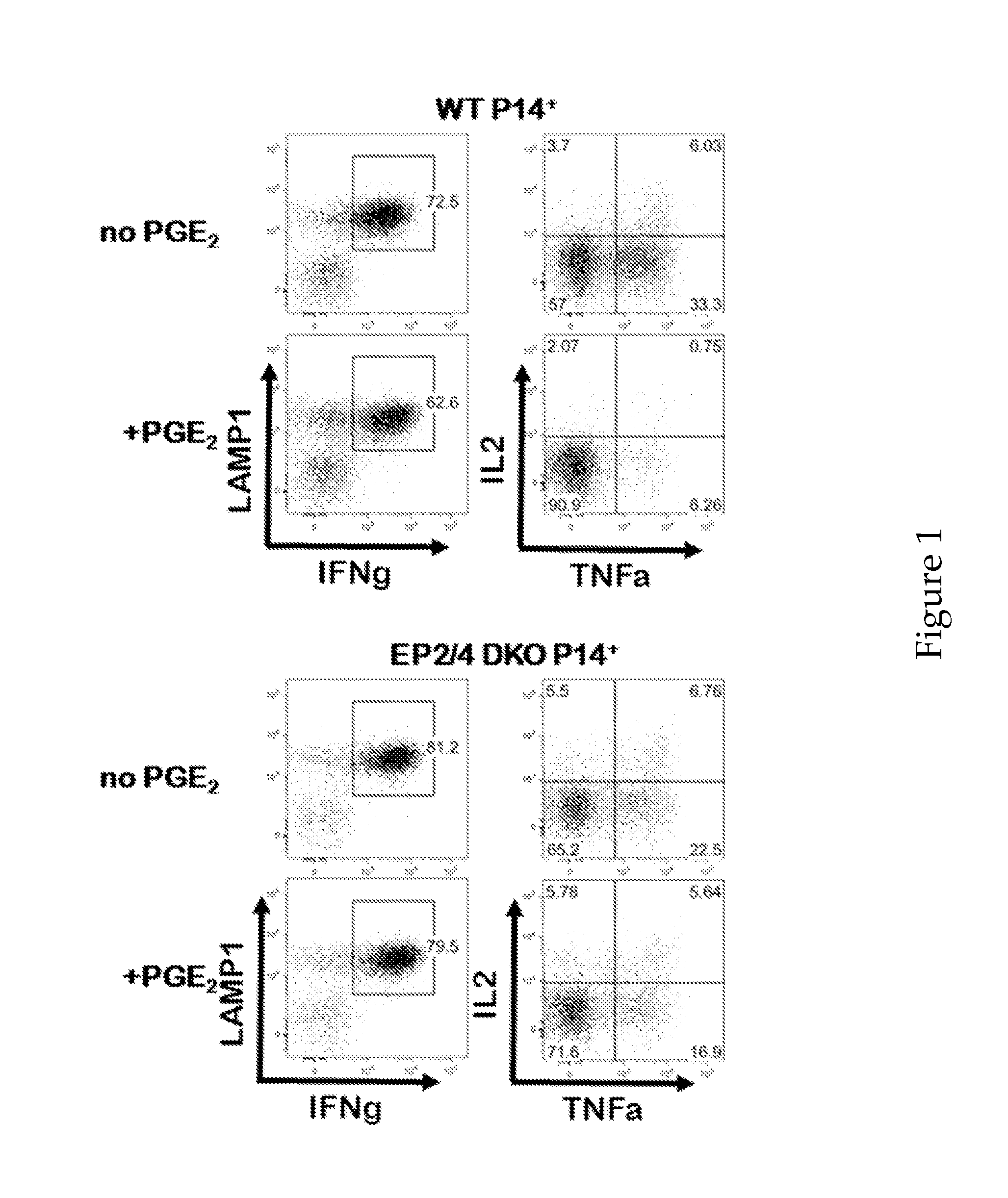Compositions and Methods for Reducing CTL Exhaustion
a technology of ctl and compositions, applied in the direction of immunoglobulins, peptides, drugs against animals/humans, etc., can solve the problems of insufficient global availability, high cost of antiviral treatments for hiv and hcv, and inability to prevent and treat serious medical complications, so as to reduce the level of at least one of ep2, prevent ctl exhaustion, and reduce the level of at least one of ep2
- Summary
- Abstract
- Description
- Claims
- Application Information
AI Technical Summary
Benefits of technology
Problems solved by technology
Method used
Image
Examples
experimental examples
[0142]The invention is further described in detail by reference to the following experimental examples. These examples are provided for purposes of illustration only, and are not intended to be limiting unless otherwise specified. Thus, the invention should in no way be construed as being limited to the following examples, but rather, should be construed to encompass any and all variations which become evident as a result of the teaching provided herein.
[0143]Without further description, it is believed that one of ordinary skill in the art can, using the preceding description and the following illustrative examples, make and utilize the compounds of the present invention and practice the claimed methods. The following working examples therefore, specifically point out the preferred embodiments of the present invention, and are not to be construed as limiting in any way the remainder of the disclosure.
example 1
[0144]The materials and methods used in this Experimental Example are now described.
Mice, Infections, Treatments, and Plaque Assays
[0145]Six week old female C57BL / 6 mice were obtained from NCI (Frederick, Md.). EP2 KO mice (Kennedy et al., 1999, Nat. Med. 5:217-220) on the C57BL / 6 line were a gift from Dr. Chuanming Hao. Genotyping for the wild-type (wt) allele used the primers 5′-CCGGGGTTCTGGGGAATC-3′ (SEQ ID NO: 1) and 5′-GTGCATGCGAATGAGGTTGAG-3′ (SEQ ID NO: 2). Genotyping for the mutant allele used the primers 5′-TTGCCAAGTTCTAATTCCATCAGA-3′ (SEQ ID NO: 3) and 5′-GTGCATGCGAATGAGGTTGAG-3′ (SEQ ID NO: 4). EP4-floxed mice (Schneider et al., Genesis 40:7-14) on the C57BL / 6 line were also a gift from Dr. Chuanming Hao. Genotyping the EP4-floxed mice used the primers 5′GTTAGATGGGGGGAGGGGACAACT-3′ (SEQ ID NO: 5) and 5′TCTGTGAAGCGAGTCCTTAGGCT-3′ (SEQ ID NO: 6). The floxed gene produced a 334 bp band, while the wt allele produced a 243 bp band. mPGES1− / − mice (Trebino et al., Proc Natl Aca...
example 2
[0159]Chronic viral infections such as HIV, HCV, HBV are global health problems that collectively infect approximately 10% of the world's population and cause severe disease or death. The development of therapies to control or cure these infections without intolerable side effects is of obvious value. One such line of therapy is to augment the numbers and function of virus-specific CTLs via blockade of inhibitory signaling pathways. In the studies described herein, it is demonstrated that PGE2 is a factor that impairs CTL survival and effector functions during chronic LCMV infection. Blockade of PGE2 signaling either directly on the CTLs (via EP2 / 4 deletion) or systemically (via mPGES1 deletion) increased antigen-specific T cell numbers and their cytokine production, especially IL-2 production. The reduction PGE2 production in mice lacking mPGES1 also led to improved viral control when CD4 T cell help was absent, a situation typically associated with increased viremia and CTL exhaus...
PUM
| Property | Measurement | Unit |
|---|---|---|
| Level | aaaaa | aaaaa |
Abstract
Description
Claims
Application Information
 Login to View More
Login to View More - R&D
- Intellectual Property
- Life Sciences
- Materials
- Tech Scout
- Unparalleled Data Quality
- Higher Quality Content
- 60% Fewer Hallucinations
Browse by: Latest US Patents, China's latest patents, Technical Efficacy Thesaurus, Application Domain, Technology Topic, Popular Technical Reports.
© 2025 PatSnap. All rights reserved.Legal|Privacy policy|Modern Slavery Act Transparency Statement|Sitemap|About US| Contact US: help@patsnap.com



